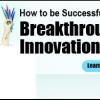Business Transformation Requires Transformational Leaders
Leadership and teaming skills are front and center in times of rapid change. Meet today’s constant disruption head on with expert guidance in leadership, business strategy, transformation, and innovation. Whether the disruption du jour is a digitally-driven upending of traditional business models, the pandemic-driven end to business as usual, or the change-driven challenge of staffing that meets your transformation plans—you’ll be prepared with cutting edge techniques and expert knowledge that enable strategic leadership.
Recently Published
The CEO: Lost in Space and Time
Cutter Consortium Senior Consultants Rick Eagar, Gregory Pankert, Raf Postepski, and Sean Sullivan discuss how the role of a CEO in 2019 is very different from that of a decade ago, primarily because traditional business boundaries are blurring while the pace of business continues to accelerate. The authors explore the changes in the CEO role and propose a new framework to help CEOs map the right strategic direction for their organizations.
This article describes some trends about technologies, technologists, and technoligarchs. First, we’ll look at the technologies with the most momentum. Next, we’ll examine the technologists escaping from data centers. Finally, we’ll round out the discussion by addressing the technoligarchs who control much of the digital landscape.
In this Advisor, the authors use the case of a fictitious financial company to take a detailed look at fintech and marketing and how a company can leverage big data, analytics, marketing, and financial services.
In this Executive Update, we focus our attention on the intersection of design thinking (as a method for understanding opportunities through a different lens) and digital transformation (the use of technology to radically improve performance or reach). In many cases, digital transformation is employed in an effort to create a competitive advantage, which in today’s business environment can at best be considered a transient advantage because sustaining anything for a long period of time is highly unlikely.
How to be Successful with Breakthrough Innovation
Creating your own How to be Successful with Breakthrough Innovation syllabus from our modular sessions will ensure that your program is right for your organization. No matter how you configure the series of sessions, you can be sure you’ll be getting strategy, insight, and advice that you can put to work right away. You’ll emerge with new ideas and strategies that have been tested and proven by innovative business leaders, and which you can put into action immediately.
In Part X, we examine survey findings pertaining to current AI application design and development trends and plans by organizations to utilize outside AI experts and to train employees in AI development.
We cannot measure organizational agility from a simple definition. We must break down this definition into some measurable elements and build a measurement tool around those elements. Luckily for us, many scholars and others have worked on developing such tools. In this Advisor, we explore one of them.
Several factors are leading the fintech revolution and affecting technological innovations. These include cryptocurrencies, tokens, initial coin offerings, blockchain, and other security advancements (i.e., multifactor and biometric authentication). The ability of the financial services industry to experiment with these new technologies responsibly is an essential component of their future success and sustainability. The disruption affecting innovation in the financial industry is also driven by the pervasive connectivity that characterizes today’s telecommunications sector, enabled by the diffusion of Internet access worldwide and the integration of the Internet with other sensor-based technologies, forming the Internet of Things (IoT) infrastructure.



























